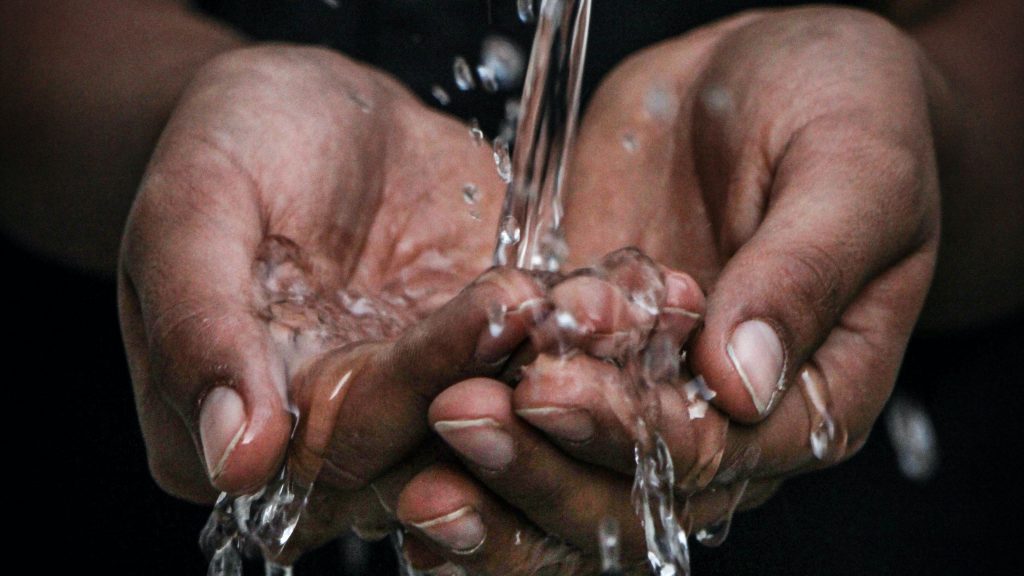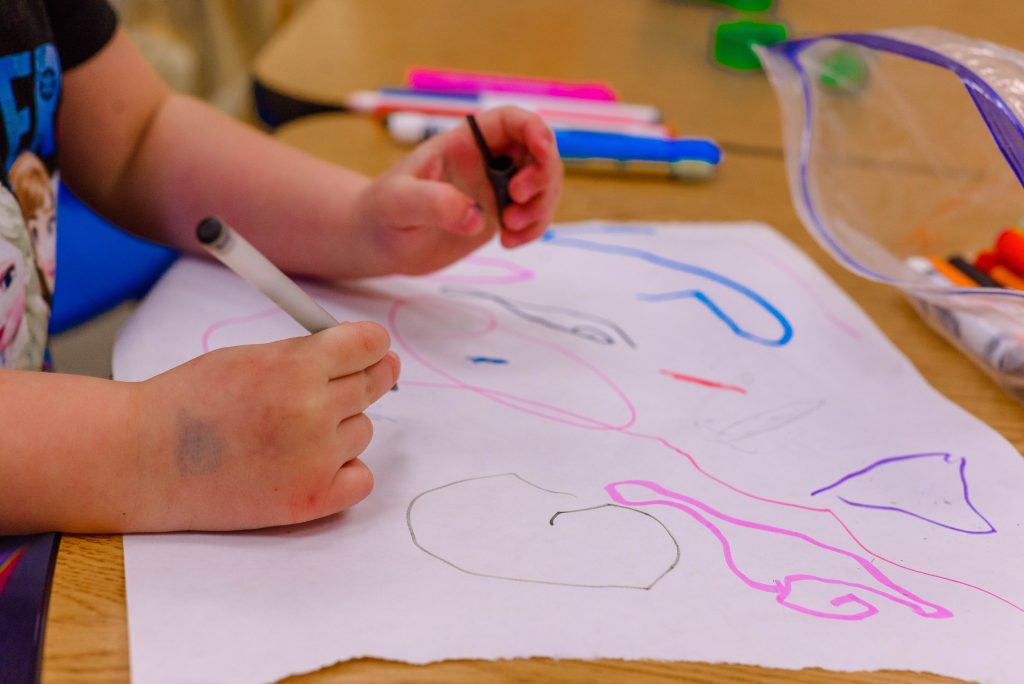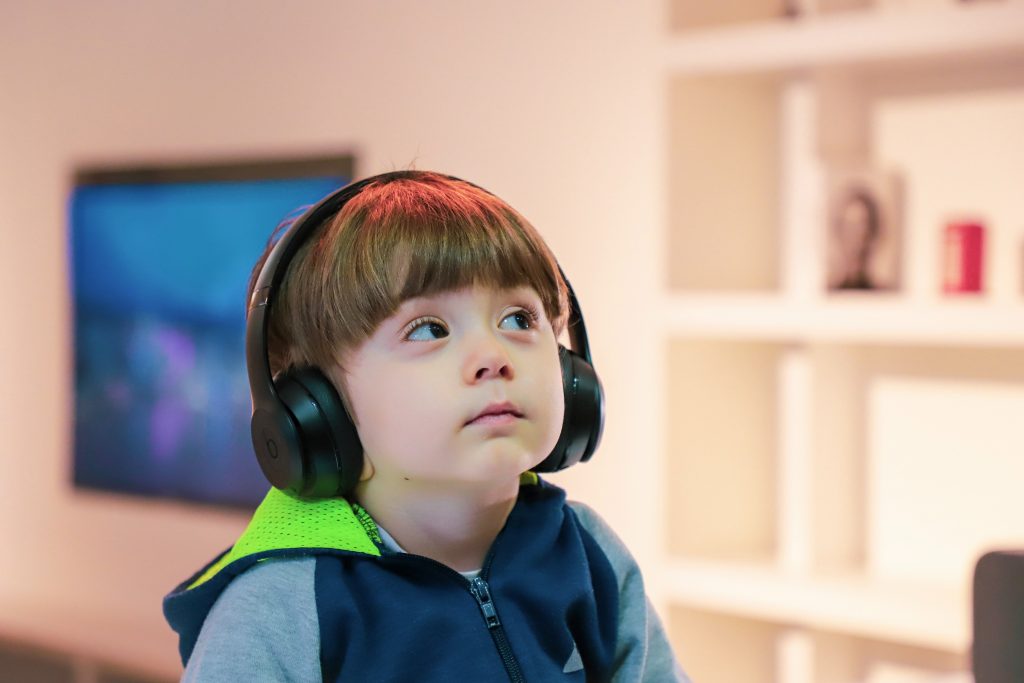Imagine you need to travel from New York to Los Angeles. (Forget Covid-19 for a moment and remember how things used to be.) You probably think you’re a credit card transaction away from putting your butt on a plane — maybe even a direct flight to your destination. No problem, right?

Now, let’s take away access to that plane. And your car. And all other forms of modern travel. You must make the trip on foot, with few resources at your disposal. However, you’re assured by everyone around you that you can make it with a little hard work and perseverance.
That trip is looking a little more challenging, isn’t it? You might have a hard time getting to Los Angeles if you make it at all. Worse yet, you can see others using these modern conveniences, but none of them are available to you.
With this scenario in mind, you might have some idea of how hard it is for an economically challenged child to achieve a quality education that leads to a well-paying career.
Low-income populations face real impediments to societal achievement that are, in most cases, impossible. The “American Dream” is a bait-and-switch fantasy; as long as a few anecdotal success stories get dangled in front of us now and then, few question just how rare those examples are. The hard truth is that upward mobility is more challenging in the United States than it is in many other countries.1“Harder for Americans to Rise From Lower Rungs – The New ….” 4 Jan. 2012, https://www.nytimes.com/2012/01/05/us/harder-for-americans-to-rise-from-lower-rungs.html.

This article offers an overview of the significant hurdles in the path of impoverished and disenfranchised people. Our goal in this piece, and across the next several articles in this series, is to discuss the issues, the data we need to capture, and data science we need to utilize to expose and help correct the underlying causes of systemic problems.
The Obstacles Start Before Birth

Let’s start with pre and postnatal nutrition. We know that diet and nutrition significantly impact brain growth and cognitive abilities from our earliest years.2“The role of nutrition in children’s neurocognitive development ….” 26 Mar. 2013, https://www.ncbi.nlm.nih.gov/pmc/articles/PMC3607807/ Impoverished people simply don’t have the same access to healthy foods that wealthier people do.
Prenatal vitamins and dietary education for the mothers-to-be are, for the most part, entirely out of reach. Even if economically challenged people know they need to eat healthier foods, the added costs of finding fresh vegetables, for instance, can be prohibitive. For many, proper nutrition during and after pregnancy often takes a back seat to paying rent.
Access to Clean Water

In a country as rich as the United States, you’d think having clean water to brush your teeth or take a shower would be a fundamental right. But there’s a lack of access to fresh, clean water that’s highly correlated with race and poverty.3“The role of nutrition in children’s neurocognitive development ….” 26 Mar. 2013, https://www.ncbi.nlm.nih.gov/pmc/articles/PMC3607807/ For example, Flint, Michigan, an economically challenged community, still has filth coming from their faucets, six years after their water toxicity was first reported. It’s hard to understate the adverse effects that toxic water can have on young children’s brain functions. From a broader perspective, what does it say about that child’s place in society when they have little choice but to live near and consume dirty water?
At-Home Role Modeling

What goes on at home has an enormous impact on a child’s potential success.4“Negative adult influences and the protective effects of … – NCBI.” 3 Jun. 2008, https://www.ncbi.nlm.nih.gov/pmc/articles/PMC2752426/ Consider the advantages that affluent households have over more impoverished families. Wealthier homes are more likely to have two parents sharing responsibilities; they tend to have more family dinners, the parents are generally more involved, are more apt to read to their kids, and may converse with their children more regularly. They are also more likely to have leisure time to play games and interact with their children. These simple interactions all have a significant impact on a child’s brain development and school readiness. Missed development opportunities are impossible to get back.
Neighborhood Environment
More impoverished kids are more likely to live in neighborhoods where water and air are more polluted than their more affluent peers. Whether it’s lead in the water or smog in the air, pollution can severely impact brain development. Impoverished communities are also more likely to have higher crime rates, affecting the level of fear and stability of a household. It’s hard to be successful when you’re always worried about yourself and your family’s safety. In other words, access to safe, secure, and affordable housing is a luxury — a luxury many of us don’t have.
Healthcare
Have you ever tried to find a doctor that takes Medicaid? They’re few and far between and often have long waiting lists. With the Affordable Care Act’s recent gutting, we have once again abandoned the impoverished and left them to their own devices. If a disadvantaged child even manages to see a doctor before they reach kindergarten, it’s likely to be at a free clinic or the emergency room instead of routine preventative care.5“20 million children lack sufficient access to health care – PNHP.” https://pnhp.org/news/20-million-children-lack-sufficient-access-to-health-care/

There’s a vast difference between public and private healthcare, a disparity highlighted by the COVID-19 pandemic. Many economically challenged people have died from Coronavirus simply because they couldn’t afford the essential healthcare services that others take for granted.
Additionally, low-income children rarely receive the preventative care they need, such as dental work and routine health exams.6“Tooth Decay: An epidemic in America’s poorest children ….” 22 Jun. 2017, http://sitn.hms.harvard.edu/flash/2017/tooth-decay-epidemic-americas-poorest-children/ Unattended dental infections can have severe impacts on a child’s overall health and can even be fatal. Providing simple pediatric preventative dental treatment and education is so simple, yet we ignore these problems until they’re staring us in the face.

Racism in the United States healthcare system adds another significant challenge to the already severe problem of staying healthy.7“Why is Racism a Public Health Issue? – Oregon Pediatrics.” https://www.oregonpediatrics.com/post/why-is-racism-a-public-health-issue Economically challenged Black and Latino individuals are ushered into substandard facilities, determined primarily by their proximity to specific hospitals and what ambulance companies service their neighborhoods. Naturally, this prevents them from getting the same quality of care as those who live in better locations.
Access to Good Preschools

If children aren’t ready for kindergarten by the time they enter school, they’ll be behind the rest of their lives. Preschool is one of the best investments we can make in our kids. Preschool better prepares children to enter the school system.8“Starting School at a Disadvantage – Brookings Institution.” https://www.brookings.edu/wp-content/uploads/2016/06/0319_school_disadvantage_isaacs.pdf The additional education provides valuable social and emotional skills that make them ready to take on the increased academic challenges ahead of them. Many long-term studies suggest that a dollar invested in preschool can return anywhere from three to eleven dollars to the community in long-term benefits.9“Obama’s claim that every dollar spent on pre-kindergarten ….” 20 Apr. 2015, https://www.washingtonpost.com/news/fact-checker/wp/2015/04/20/obamas-claim-that-every-dollar-spent-on-pre-kindergarten-education-earns-7-back/
School Funding
There’s a significant disparity in resources between schools in different neighborhoods. When we look at funding differences across various public-school districts, we can see how disadvantaged people fare.
These disparities exist all across the country.10“Making the Grade 2019 | Education Law Center.” https://edlawcenter.org/research/mtg-full-report.html Of course, much of the funding comes from local property tax income, so the differences shouldn’t be a big surprise to anyone. With that in mind, can anyone argue that underprivileged children have the same opportunities as affluent children do? Do we believe that economically disadvantaged children simply need more perseverance and grit to overcome these obstacles?

Lack of funds is a barrier to hiring the best teachers, buying new books, implementing new technology resources, and extracurricular richness overall. Now and then, you’ll hear anecdotal stories of how a disadvantaged school is overcoming their challenges with the best chess team, debate team, or mathletes. But don’t be fooled — these are fictions pushed by socioeconomically advantaged people desperate to believe the fantasy that all is well and fair. The real story is evident in the data, and we don’t need to dig far to find it.
In general, poverty-stricken schools have less experienced teachers.11 “COURSE, COUNSELOR, AND TEACHER GAPS: Students in ….” 23 Jun. 2015, https://all4ed.org/articles/course-counselor-and-teacher-gaps-students-in-high-poverty-schools-receive-inadequate-college-preparation-according-to-new-study/ They also have fewer high-level courses. Without a strong foundation provided by better teachers and curriculum, students struggle to succeed in high school, college, and beyond.
Racism also has a powerful effect on educational opportunities for Black and Latino children.12“Six Truths About Racism That White Teachers Must Know.” 5 Jun. 2020, https://blogs.edweek.org/teachers/classroom_qa_with_larry_ferlazzo/2020/06/six_truths_about_racism_that_white_teachers_must_know.html Multiple studies have shown a systematic disparity between how teachers and administrators treat white children compared to children of color. It’s a hard pill to swallow, but identifying these disparities is the first step towards a fair and equitable system for all.
Individualized Education Programs (IEPs)
IEPs are a saving grace for kids with disabilities. Kids with disabilities get the added resources they need to be successful with these programs. Typically, a team of people, including parents, teachers, test experts, a school system representative, and other interested parties, design a child’s custom IEP. The laudable goal is to use the IEP to establish educational initiatives and remedies customized for each child. In short, they encourage school systems and teachers to provide special arrangements for children with impediments to traditional learning.
For example, an IEP may offer more time on tests, seats in the front of the classroom, communication aids, assistive technology devices, and many other helpful tools.

However, IEPs are expensive, they involve a fair amount of resources, and many schools are reticent about granting them because they require hyper-individualistic attention and communication to implement. If your child is in an economically challenged school with fewer resources, you will likely have to fight and advocate for your child to get the added help they need.13“Special Education: Examining the impact of poverty on … – ERIC.” http://files.eric.ed.gov/fulltext/EJ1098449.pdf Of course, all of that assumes that parents are aware of these programs and know how to advocate for their children effectively.
Affluent children have more options for addressing these issues. These parents can hire outside assessment and testing services to evaluate their child for learning disabilities, while more impoverished families cannot. Additionally, affluent parents are more likely to be able to advocate for their children. They may be able to get time off work to partner with the school system, and they may be more knowledgeable about their rights in general.
Guidance Counselors

Wealthier schools can afford guidance counselors who help nurture children along their path to success. Schools in more impoverished areas simply do not have the resources for this luxury. Without these role models to provide help and support, children have a more challenging time making far-reaching decisions that will affect their futures.
Additionally, the available guidance counselors often give Black and Latino children different advice than their Caucasian classmates. There’s a difference between culturally sensitive counseling and lower expectations, but many educators fail to make this distinction.14“Equal Access to College Hampered by Lack of Guidance ….” 30 Jan. 2019, https://spotlightonpoverty.org/spotlight-exclusives/equal-access-to-college-hampered-by-lack-of-guidance-counselors/
Racism in Law Enforcement
One doesn’t need to look much further than the Black Lives Matter movement to see how police discrimination in the United States affects people of color They are detained more often and are more likely to be criminally charged than white people, even when you take into account demographics.15“Black People Are Charged at a Higher Rate Than Whites ….” 12 Jun. 2019, https://www.nytimes.com/2019/06/12/us/prosecutor-race-blind-charging.html Now, put yourself in a child’s shoes who has had to grow up in these conditions. Continual reminders by law enforcement that you are “other” and “less than” will have a devastating impact on your health, well-being, and potential.
Standardized College Admission Test Bias

The SAT and ACTs have long been considered biased towards more affluent children, with better scores highly correlated to wealth and race. The testing companies point out that the bias shows up more because of test preparation than inherent racial or economic discrimination. However, test preparation is expensive, and the fees are usually beyond the reach of the disadvantaged. As we’ve described, affluent children often benefit from attending schools that develop a better foundation for admissions tests throughout their curriculum.
Career Planning for Good Jobs
Somewhere between middle school and post-K12 education, children need to plan for a career. Most well-paying jobs have many prerequisites. These can include courses, experiences, internships, certificates, and apprenticeships. Affluent families tend to introduce these prerequisites to children at a very early age, whereas disadvantaged children may lack role models and mentors. They’re less likely to be aware of potential career paths due to lack of exposure.
Access to Colleges and Certifications
Some disadvantaged children have the tenacity and perseverance to make it through this gauntlet of obstacles and eventually apply to college. From there, however, they face more insidious problems. For many, paying for college seems as difficult as climbing Mount Everest with sunglasses and flip-flops. Of course, there are scholarships and grants, but knowing about them and applying for them requires a knowledgeable person willing to help.
Additionally, private colleges enjoy the walls they’ve erected around admissions. Legacy preferences, among other things, cut down the number of available seats (after all, you must save room for your donors). Although this amounts to approximately ten to fifteen percent of private school seats on average, it’s a limiting factor worth noting.

Certifications are an exciting and growing opportunity path for many. Companies hire people who have not attended a four-year institution but have achieved certificates in specific skills. To attain certification, however, you need to know about the jobs and the career path you want to pursue.
Those who attend a four-year college have time to explore and think about their futures. Economically disadvantaged children don’t always have that luxury. Without exposure to potential careers, they need to choose a direction with little or no information blindly.
“Good Ole’ Boy” Network of Jobs

If you’re one of the very few that overcome the odds and become qualified for a well-paying job, you may be limited in finding a good opportunity. Race bias is rampant in white collared jobs.16“Why Aren’t Black Employees Getting More White-Collar Jobs?.” 28 Feb. 2018, https://hbr.org/2018/02/why-arent-black-employees-getting-more-white-collar-jobs Although many companies (particularly in high tech) are being held accountable for the disparities, the fact remains that companies hire Black and Latino men and women at lower rates than equally qualified white people.
Data, Data Science, and Machine Learning
There is a distant light at the end of this long tunnel. For each of the issues described above, we can use data to help us choose the right direction.
Over the next several articles, we’ll be taking a microscope to each area, focusing on the data we need to collect and the possible outcomes we can achieve. We can use the same technologies we use to make driverless cars and photo recognition to close the growing gaps between the disadvantaged, the disenfranchised, and the affluent few. We know how to help all individuals grow to be their greatest selves, and we should start as soon as possible.








